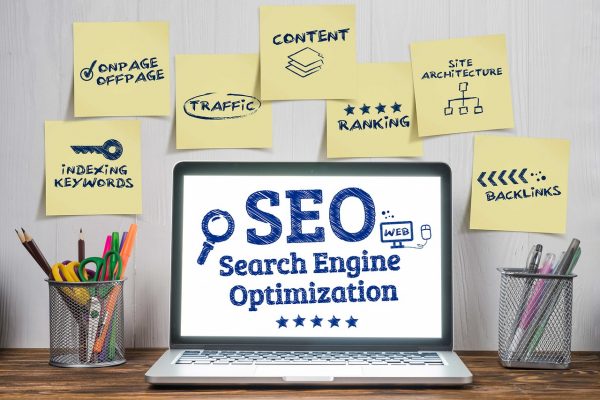

Mastering PMax Campaigns: 4 Game-Changing Features You Should Start Using Today
Mastering PMax Campaigns: 4 Game-Changing Features You Should Start Using Today
Performance Max (PMax) continues to evolve at a frenzied pace, redefining how digital marketers approach automation, creative testing, and optimization. If you’re feeling overwhelmed by a wave of new features and best practices, you’re not alone. But, what separates the top performers from the rest isn’t simply access to the latest tools. It’s knowing how to wield them correctly.
Having managed accounts across e-commerce, lead generation, and local services, I’ve seen firsthand how embracing critical PMax changes can shift results from mediocre to market-leading. Let’s dig into the four most powerful Performance Max updates and tailor expert strategies that will help you reclaim control, maximize conversions, and sharpen your competitive edge.
1. Unlocking the Power of Asset Group Experiments
Google’s latest asset group experiments are purpose-built for advertisers who want facts. Not hunches. About which creative combinations actually drive outcomes. For years, testing has been hit-or-miss in automated campaigns, but now you’re empowered to pit multiple asset groups against each other, measuring impacts by conversion rates, click-throughs, and engagement metrics all in one place.
By running precise experiments within asset groups, you get actionable insights about which headlines, images, and calls-to-action move the needle. Perhaps you’ll find your brand’s value proposition resonates far more when paired with a punchy vertical video than with a static banner. Making those swap decisions winsome and quick. Over time, this structured experimentation cultivates a pipeline of proven assets and keeps creative fatigue at bay.
Best Practice: Always maintain clear hypotheses before starting an experiment (for example, “Short headlines increase conversions for new visitors”), and let each test run for at least two weeks to gather statistically significant data. With PMax’s rapid reporting and robust insights, you’ll no longer guess what’s working. You’ll know.
2. Video Asset Enhancements: Boosting Engagement where it Matters
Video isn’t optional anymore. It’s essential. The most recent PMax updates integrate AI-powered video enhancements, automatically optimizing your clips across placements from YouTube Shorts to Display. These upgrades not only ensure your videos meet all current technical guidelines but help your message stand out in crowded feeds.
Google recommends short, captivatingly branded videos (as brief as 6-15 seconds) aligned to your campaign objectives. These should open with value, finish strong, and be produced in varied formats to match mobile-first viewing habits. What I’ve seen work well: leveraging a mix of testimonial-style snippets and high-impact product demos. In campaigns I managed last quarter, videos adhering to Google’s new guidelines delivered up to 30% higher engagement across placements versus basic, non-optimized videos.
Use the Asset Library’s video creation tools if production resources are limited, and regularly audit for underperformers. Remember, videos are often the first touchpoint for discovery. Make every frame count.
3. Navigating the Updated Ad Ranking Algorithm
This year’s major algorithmic adjustment has made ad rank more decisive than ever in PMax campaign auctions. Where previous versions blended signals from legacy Shopping or Search, now your campaign’s visibility often hinges directly on your ability to optimize for ad rank.
What matters most? Bid levels, high-quality creative assets, and relevance across all supplied inputs. Higher cost-per-click bids can help win competitive placements, but it’s not just about spending more. Google’s system gives preference to campaigns with tightly aligned messaging and assets that consistently match evolving user intent. I’ve worked with retail accounts that surged in impression share simply by refreshing asset groups to reflect real-time queries and demand peaks, outpacing competitors who relied on static, generic messaging.
Don’t let these changes catch you off guard. Review your asset relevancy, update negative keyword lists, and ensure your feed data or headlines are granular enough to catch rising trends. The difference between showing up at the right moment or being invisible may come down to a few minor tweaks in ad copy or bid strategy.
4. Smart Bidding with Target ROAS: Getting More from Every Click
Performance Max has taken Smart Bidding, especially Target ROAS, to the next level. The machine learning underlying this system now processes more conversion signals, enabling tighter bidding for value and improved ROI management.
Yet, unlocking the full benefits of Target ROAS means more than just plugging in a number. Consistent data is king. Smart Bidding thrives when you have a steady stream of high-quality conversion data, so focus on setting realistic targets based on historical performance and allow algorithms sufficient time to optimize. One mistake I’ve seen is switching ROAS targets too frequently or too soon, causing volatility and underperformance. Let your campaign scale, resist the urge to make frequent budget or target adjustments, and revisit targets only after significant performance shifts.
A practical application: In a recent retail campaign, after settling on a ROAS target informed by 30 days of conversion data, we maintained stability even during seasonal fluctuations by limiting changes. The result? Return on ad spend outperformed when compared to previous campaigns that were micromanaged on a weekly basis.
Avoiding Common Optimization Pitfalls
While shiny new features may tempt you to overhaul campaigns frequently, it’s crucial to remember: Performance Max is designed for ongoing learning and optimization. Not constant resets. Resist knee-jerk reactions to minor data swings and focus on trends across longer windows. Quick fixes, especially during ramp-up or seasonal peaks, can disrupt the system and undercut your results.
Some pitfalls to dodge:
– Overloading campaigns with too many untested creative assets at once
– Making frequent, drastic bid or budget changes
– Relying solely on automated recommendations without human review
– Neglecting negative keywords or audience signals
Instead, treat PMax as a living, breathing entity: test and learn with intent, calibrate based on real outcomes, and always revisit creative based on what users are responding to right now.
Expert Recommendations for Sustained Growth
- Start Small, Scale Smart: Deploy asset group experiments on a limited scale to validate what performs before rolling out broadly.
- Balance Automation and Oversight: Let Smart Bidding do its job, but audit regularly for optimization gaps and new creative opportunities.
- Prioritize User Trends: Align messaging and visuals to reflect current search trends. As Google’s ranking algorithm shifts, staying relevant is the fastest path to visibility.
- Invest in Quality Content: High-performing images, videos, and responsive headlines directly fuel higher ad ranks and ROAS.
From hands-on campaign management, these habits pay off in the form of higher conversions, increased ROI, and peace of mind that you’re not leaving growth to chance.
Frequently Asked Questions
How long should I run Performance Max asset group experiments before making changes?
Always allow at least two weeks for your experiments to collect enough data. This ensures results are statistically meaningful and not just temporary fluctuations. For high-traffic accounts, you might see trends even sooner, but patience pays off.
What types of video content work best in PMax campaigns?
Short, compelling videos that clearly communicate value in the first few seconds tend to perform best. Think mix of testimonials, product demonstrations, or quick, branded intros tailored to your audience’s needs.
Should I make frequent adjustments to Smart Bidding ROAS targets?
No. Consistency is crucial. Give the algorithm steady, quality data over several weeks before recalibrating targets. Especially after major seasonal or product changes.
How does Google’s ad ranking update affect my campaign’s visibility?
The ranking algorithm favors relevant, high-quality, and well-bid campaigns. Keep creatives fresh, update feeds or headlines as trends emerge, and monitor relevance as closely as your bid levels.
What’s one common mistake advertisers make with PMax optimization?
Many overcomplicate things by acting on every minor data shift. Focus on sustained trends and trust in the ongoing learning abilities of the platform for lasting improvements.
Bringing It All Together: Elevate Your PMax Strategy Today
Emerging at the top with Performance Max is less about pushing buttons and more about strategic, thoughtful refinement. When you prioritize evidence-driven experiments, create purposeful videos, understand the nuances behind Google’s ranking machinery, and let Smart Bidding learn over time, you unlock sustained growth and higher ROI.
Every account has its unique rhythm. Find yours through measured testing, continuous analysis, and creative innovation. The advertisers making the most of these updates are those who orchestrate all elements in harmony, not just the loudest trends of the moment.
Ready to make your Performance Max campaigns more effective? Dive into these features, learn from your results, and keep building on what works. The future belongs to those who experiment boldly and optimize with intention.







